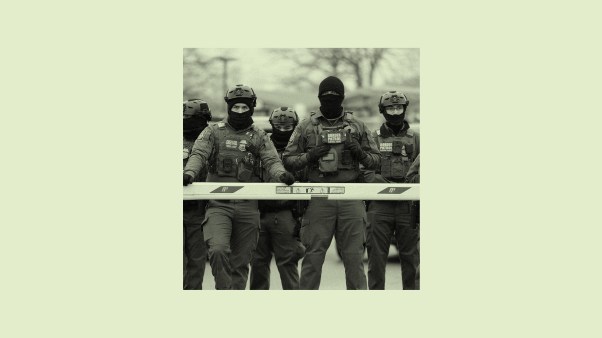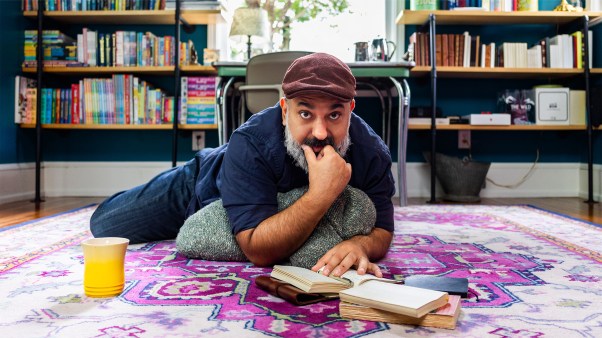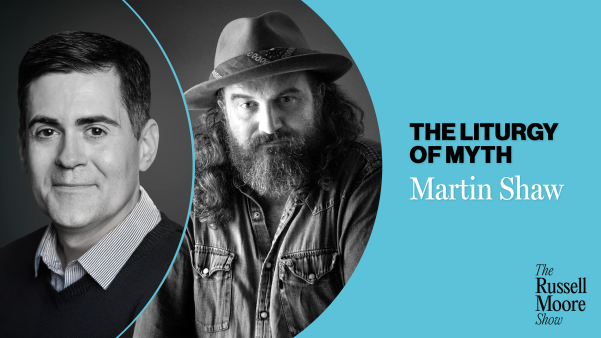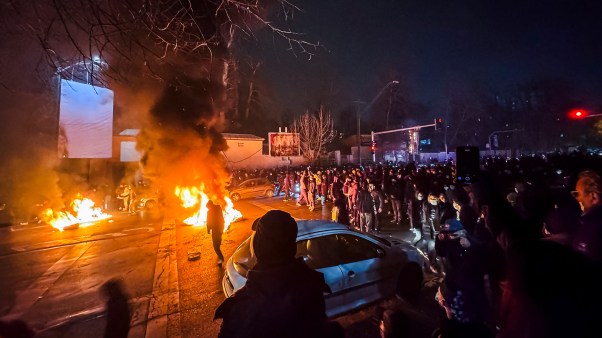It’s been 28 years since Martin Scorsese ruffled the feathers of many Christians with the controversial Last Temptation of Christ, a film condemned by the Roman Catholic Church (of which Scorsese is a member) and a key moment in the history of the culture wars. A sincere if uneven exploration of the “fully man” side of Jesus, Last Temptation angered many believers because of its suggestion that Jesus experienced sexual desire for Mary Magdalene.
For filmmakers exploring the humanity of Jesus, a safer bet than pondering his sexuality is depicting his suffering (see Mel Gibson’s The Passion of the Christ). That’s the approach Scorsese takes in his new film, Silence, appropriately released during the season in which we ponder Christ’s incarnation.
A passion project in the works for nearly three decades (since around the time of Last Temptation), Silence is the work of a director whose faith—and artistry—has matured with age.
“Last Temptation was where I was at the time in my own search,” said Scorsese recently in an interview. “It went on one track; Silence went on another. It went deeper.”
Scorsese’s Pilgrimage
Scorsese described the process of making Silence as a “pilgrimage,” a working-out of his Catholicism through the medium he knows best: cinema.
“My way into spirituality happens to be Roman Catholicism,” he said at the screening of Silence I attended in LA. “Over the years I have been concerned about just distilling it to the essence of how one should live one’s life in imitation of Christ, so to speak. This film enabled me to not only think about this but to work it. For me the film isn’t finished.”
Silence is not just about mission. The film is itself missional.
Based on the acclaimed 1966 novel by Japanese Catholic writer Shusaku Endo, Silence is a book about 17th century Jesuit missionaries trying to make inroads for the gospel in the inhospitable “swampland” of Japan, facing intense persecution by a Japanese shogunate determined to wipe out Christianity’s influence in their realm.
Sent from Portugal to seek the whereabouts of a fellow Jesuit priest (Liam Neeson) who had gone missing in Japan amidst intensifying persecution, Father Rodrigues (Andrew Garfield) and Father Garrpe (Adam Driver) go to Japan to minister to the persecuted Kakure Kirishitan (“Hidden Christians”) community and see if they can find the missing priest. Their faith is tested as the Grand Inquisitor Inoue (Issey Ogata) forces them to denounce their faith or watch Christians be tortured and killed.
In stark contrast to the response of the Catholic church to Last Temptation, Scorsese was recently invited to the Vatican to screen Silence and meet Pope Francis. According to Scorsese, the Pope told him he had read Endo’s novel and said, “I hope the story of the film, knowing the book, bears much fruit.”
A Meditation on Missiology
I am optimistic about the hope Pope Francis expressed. Silence presents a textured, realistic Christian faith, and has the potential to build the faith of the devout and the skeptical alike, bearing fruit in the church’s witness and mission in the world.
Dedicated to “Japanese Christians and their pastors,” Silence has a lot to say to the church about cross-cultural missions and contextualization. Father Rodrigues (Garfield) and Inoue (Ogata) frankly discuss the nature of Christianity and why it is unwelcome in Japan: “You missionaries do not seem to know Japan,” says Inoue, who insists the “tree” of Christianity won’t take root in the soil of Japan. It may be fruitful in Portugal and Europe, and that’s fine, but it doesn’t work in Japan. Rodrigues responds with a defense of the universality of truth: “If a doctrine wasn’t as true in Japan as it is in Portugal, we could not call it true.”
Why is Japan so inhospitable to the gospel? Rodrigues insists officials are poisoning the soil. Inoue says the climate is simply not conducive to the growth of Christianity, as if one tried to plant an orange tree in Siberia. Late in the film one of the “fallen” priests suggests that the fruit of Japanese converts is false fruit. They believe in the “Sun God,” not the Son of God. They aren’t becoming martyrs for Christ, but for the missionaries, he argues. The film (and book) asks the audience to ponder for themselves the authenticity of the Japanese converts’ faith. Can Christianity survive in hidden form, even if publicly it is denounced? Can the Christian gospel be enacted in a particularly Japanese manner (even with some Buddhist-inspired touches) and still be the same Christian gospel?
While the missiological insights of Silence are manifold, a feature film is inherently unable to explore the full depths of Christianity in Japan. In his book Silence and Beauty, released earlier this year, Japanese American artist Makoto Fujimura contemplates the theological meaning of the fumi-e, the pieces of copper with the face of Christ that Japanese Christians were forced to step on as they apostatized. In the worn-smooth visage of Christ on these fumi-e, stepped on “by his enemies and friends alike,” Fujimura sees perhaps the truest, most enduring image of Christ, “the most unique presence in the history of humanity in that he led by giving his power away.”
The tragedy of fumi-e is also a triumph, then, because it captures the distinctive power of Christianity: power in weakness. The New Testament is full of this truth. Christians are called to imitate Christ, who emptied himself, took the form of a servant and humbled himself to the point of the cross (Phil. 2:7–8). The cross is a thing of folly but to those being saved it is the power of God (1 Cor. 1:18). “For when I am weak, then I am strong” (2 Cor. 12:10).
The Subtle Power of Suffering
This offensive, upside-down formula is both a source of hard-heartedness toward Christianity and the cause of its longevity. At one point, Silence references the famous Tertullian quip that "the blood of the martyrs is the seed of the church,” an idea Scorsese’s film both proves and complicates. One cannot help but be moved by the film’s depiction of faithful Christians being tortured and executed: burned on pyres, scalded with hot water, hung upside down, beheaded, drowned, hung on crosses on the beach and battered by high tide. As a Christian I wept through many of these scenes, seeing in them Christ and the hope of Matthew 16:25: “whoever loses his life for my sake will find it.”
Yet I wondered as I sat in the packed LA theater: How is this unapologetically Christian film landing on the many nonbelievers in the room? Do they see meaning in this suffering too, or just folly?
There is power in subtlety and silence. While many Christian films tend to convey impatience in getting their message across, Scorsese’s film is confident in its quietness and the delicate power of its images: dirty hands clasping a wooden cross, a secret church gathering to pray and take communion, a martyr looking upward to the sky and praying with his last breaths.
Silence is not just about mission. As Pope Francis implied in his remarks to Scorsese, the film is itself missional.
Silence is beautifully minimalist, not nearly as stylized or frenetic as some of Scorsese’s earlier epics (think Wolf of Wall Street, The Departed, or Gangs of New York). Shot in muted hues by cinematographer Rodrigo Prieto and full of the sensory ambience of nature (birds, insect chirps, the crashing of waves), the film has a zen quality to it. As it moves along, Silence draws the viewer into an ever more contemplative space, gradually stripping away all else and focusing our gaze on Christ.
This is a film about what it means to know Christ, the “man of sorrows and acquainted with grief,” even in our darkest moments of despair and pain. To believe in Christ is to believe in Immanuel, “God with us”: with us in weakness, with us is doubt, with us in suffering.
We don’t always hear God or feel him in our pain, and yet he is still with us. This is the faith of Father Rodrigues in Silence: “Christ is here. I just can’t hear him.” Throughout the film, Rodrigues has doubts (“Am I just praying to nothing?”), but keeps seeking God. He watches the martyrs die and believes God heard their prayers, “But did he hear their screams?”
An Incarnational Film
To prepare for the role of Rodrigues, Garfield underwent a 30-day retreat of the Spiritual Exercises of Saint Ignatius of Loyola, under the guidance of Jesuit priest Fr. James Martin.
“You are walking, talking, praying with Jesus, suffering with him,” said Garfield of the retreat. “And it’s devastating to see someone who has been your friend, whom you love, be so brutalized.”
Questions of suffering are not easily resolvable in philosophy and theology. Silence does not attempt to answer them logically, but it does present us with Jesus. At various points in the film the screen is consumed simply by a portrait of Christ by El Greco, staring right at us, into our doubts and loneliness and hopes and fears. The deep, deep love of Jesus is right there in his eyes. Scorsese said he picked the El Greco image because it seemed to communicate to the viewer: “I will not abandon you.”
Silence reminded me of a quote from poet Christian Wiman in his memoir, My Bright Abyss: “I am a Christian because of that moment on the cross when Jesus, drinking the very dregs of human bitterness, cries out, ‘My God, my God, why hast thou forsaken me?’ … He felt human destitution to its absolute degree; the point is that God is with us, not beyond us, in suffering.”
Far from a reason to abandon faith, in Christianity, suffering is a way into faith. Too often our Christian mission feels too world-denying, too experience-transcending. Too often it has been all Sunday and no Friday. Yet part of the good news, to paraphrase Wiman, is that God is with us and not beyond us in our struggles.
Three decades ago Christians responded to Martin Scorsese’s Last Temptation not with silence, but with bullhorns and picket signs. The culture wars framed Christianity as a fight for power through the avenues of media and politics and pop culture. Scorsese’s Silence should remind Christians that the way of Jesus is not the way of positioning for maximum power and platform and influence. Quite the opposite.
To follow Jesus is to follow him in the way of weakness, the way of self-giving love, the way of silence. It’s the way of “quick to listen, slow to speak.” It’s the way of the weak things shaming the things that are strong (1 Cor. 1:27), of “greater love has no one than this…” (John. 15:13). We should not seek persecution, but if it comes we should meet it not with pride or power-grabs or verbose defenses, but with the compassion and redemptive silence of our Lord, who was oppressed and afflicted, “yet he did not open his mouth” (Isa. 53:7).
Brett McCracken is a Los Angeles–based writer and journalist, and author of the books Hipster Christianity: When Church and Cool Collide (Baker) and Gray Matters: Navigating the Space Between Legalism and Liberty (Baker). His website is brettmccracken.com.









